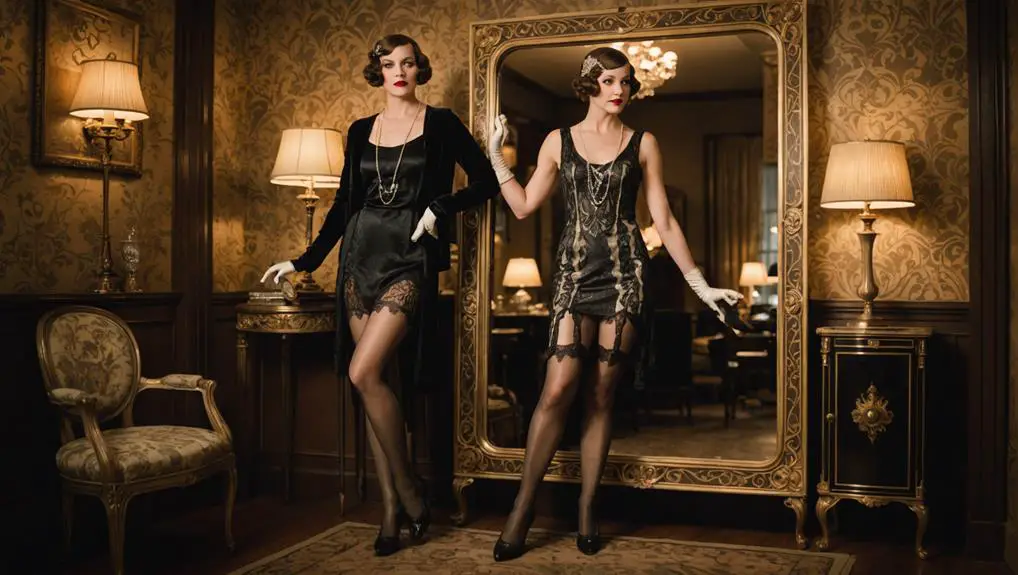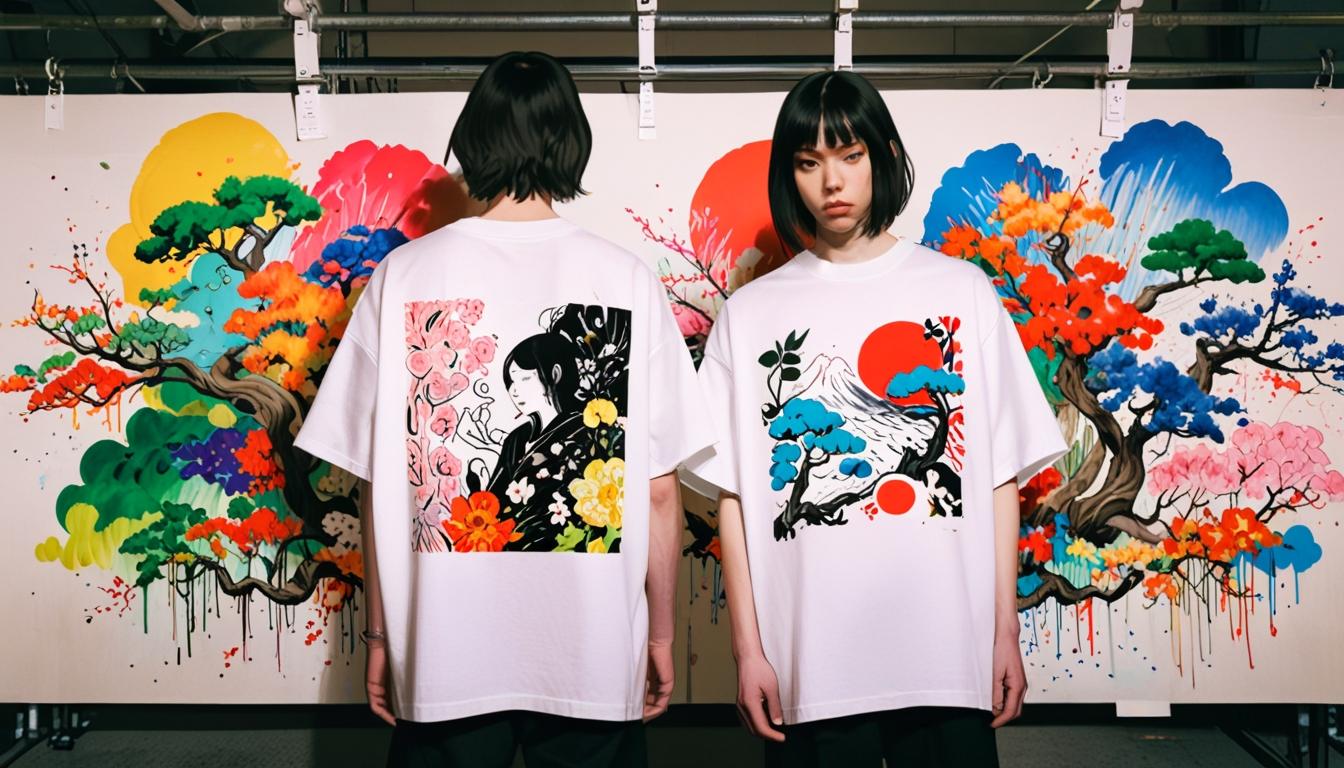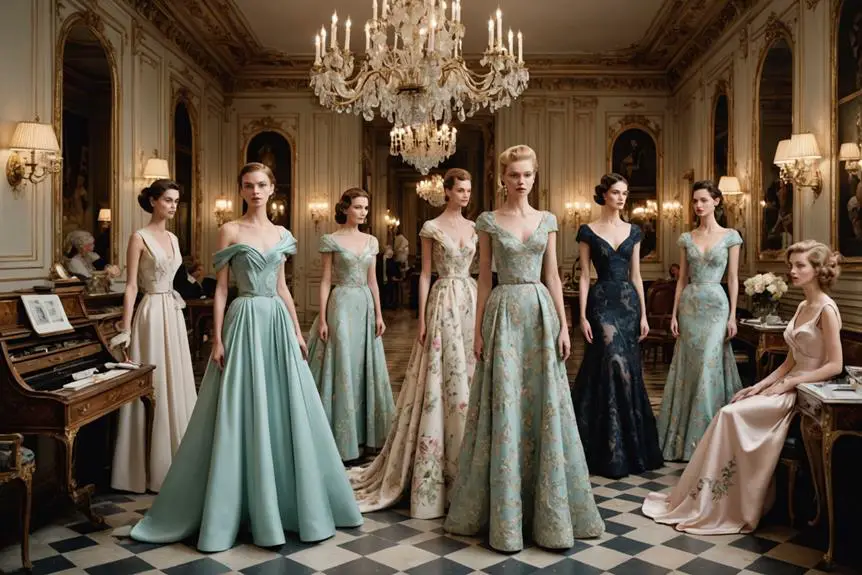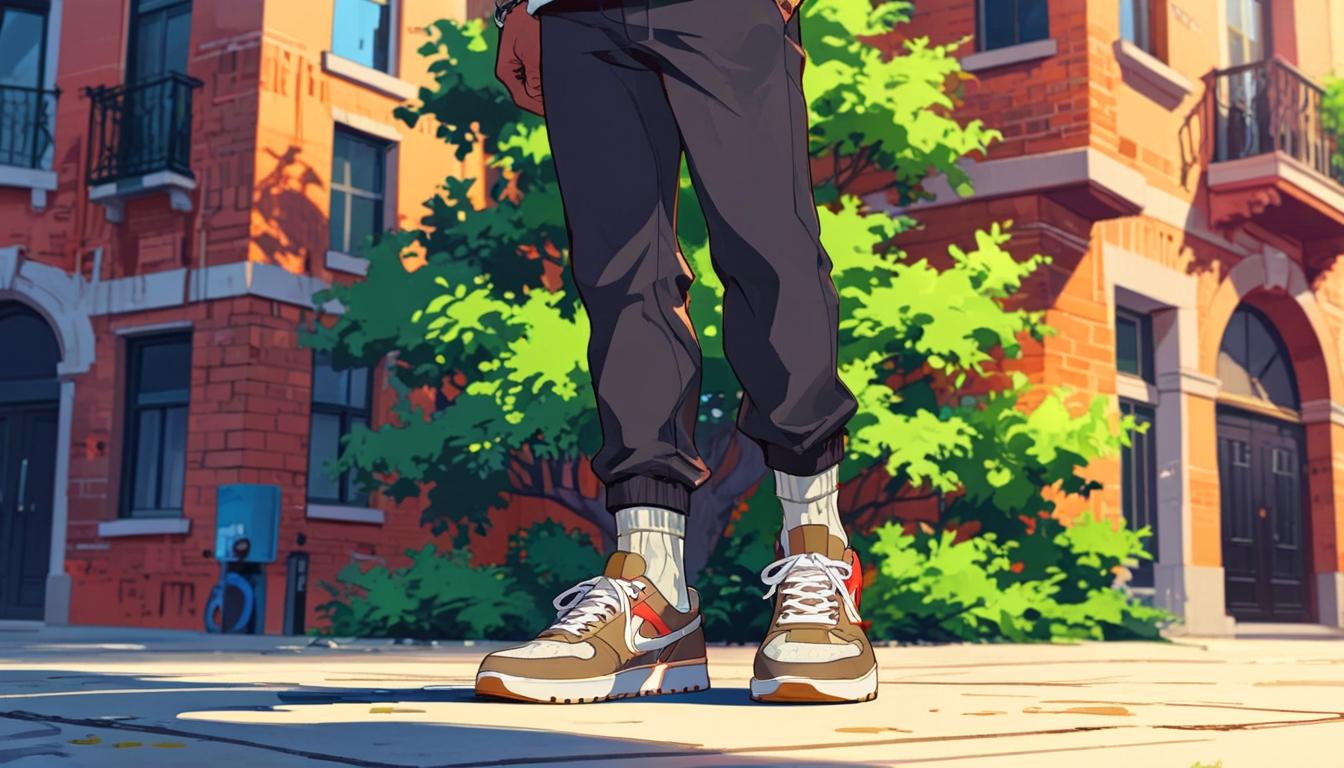Women's silk stockings in the 1920s transformed from simple essentials into significant fashion statements that mirrored the era's cultural shifts. As hemlines rose, stockings became tools of self-expression and empowerment for women. You'll notice how the introduction of rayon provided alternatives to silk, with innovative patterns and colors gaining popularity. Full-fashioned designs signified luxury and status, while playful motifs showcased individuality. Light shades, like ivory and pink, later reflected evolving beauty ideals. This decade marked a pivotal moment in fashion history, highlighting women's liberation. Discover more about the fascinating evolution of this iconic accessory and its impact on modern styles.
Evolution of Stockings
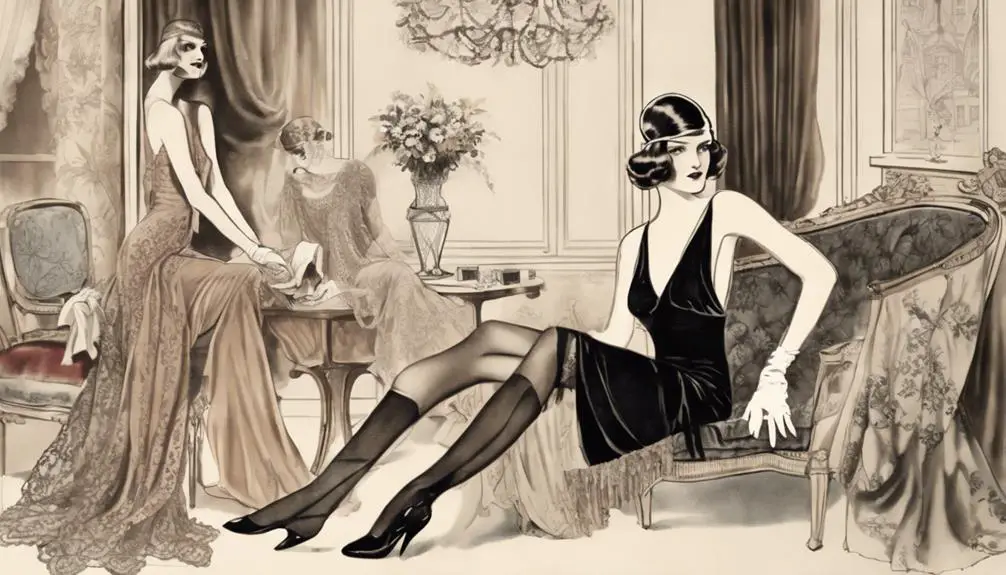
How did stockings evolve from mere functional garments to essential fashion statements in the 1920s? As the Roaring Twenties ushered in a cultural revolution, women's fashion underwent a radical transformation. The rise of flapper styles, with their shorter hemlines, made stockings a focal point of any outfit. No longer just for warmth, they became a vibrant accessory that showcased individuality and social status. The identification of vintage clothing, particularly in the domain of stockings, involves examining stitching and fabric types, which reflected the era's unique craftsmanship and design trends, as highlighted by vintage clothing labels.
Silk stockings, once the standard, began to fade as new materials like rayon emerged, allowing for shinier, more diverse stocking styles. This shift not only enhanced the aesthetic appeal but also broadened the color palette, introducing pastels and vibrant hues that mirrored the decade's exuberance. By the late 1920s, full-fashioned stockings, defined by their seams and tailored fit, signified quality and luxury, influencing women's fashion choices.
Advertisements targeted toward women emphasized the importance of stockings in completing their looks, reflecting the era's daring and expressive fashion sensibilities. As a result, stockings became a symbol of empowerment, marking a significant chapter in fashion history where utility met style, forever altering how women approached personal expression through clothing.
Materials Used in Stockings
Stockings in the 1920s were crafted from a variety of materials, each contributing to their allure and functionality. Silk was the most coveted choice, prized for its luxurious feel and elegant sheen, making it the go-to material for stylish women. However, as the decade progressed, rayon emerged as a popular synthetic alternative. While it offered a shiny finish that mimicked silk, some considered it less fashionable, showcasing the tension between tradition and innovation in the fashion world.
Wool stockings became essential for winter wear, providing warmth and comfort during colder months. In contrast, lighter materials like cotton were favored during the summer, reflecting the diverse needs of women's wardrobes across seasons. The quality of these stockings also varied considerably, as higher thread counts typically indicated greater durability and style, often commanding higher prices.
As fashion evolved, decorative elements, such as clocked designs and patterned fabrics, began to surface, illustrating the changing trends in materials and aesthetics. This variety in materials not only enhanced the visual appeal of stockings but also catered to the practical needs of women, allowing them to express their style throughout the year.
Construction Techniques
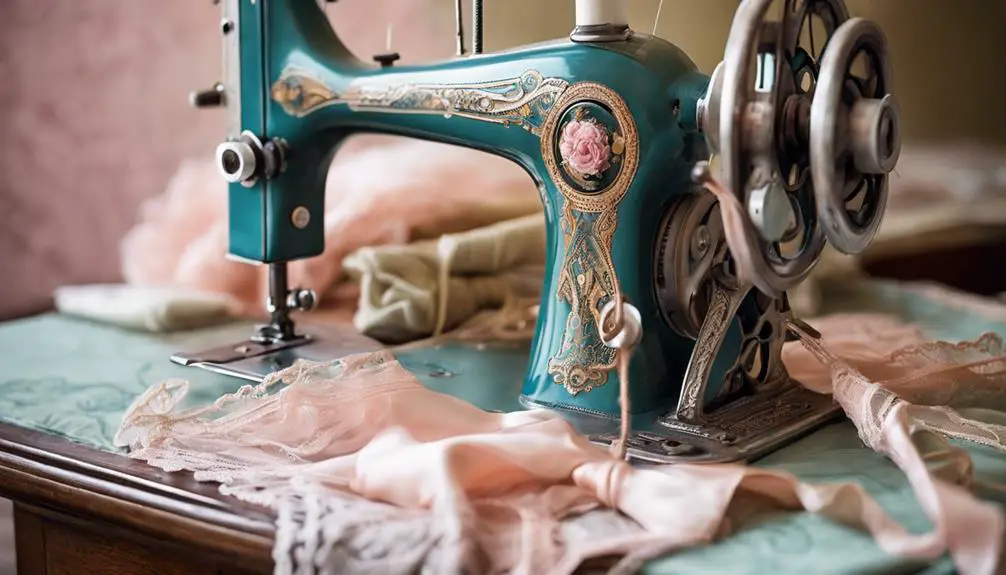
As women's fashion evolved throughout the 1920s, the construction techniques of stockings played a significant role in defining their appeal and functionality. Primarily crafted from silk, these stockings were available in various styles, each offering unique fits and finishes. Among them, full-fashioned stockings stood out. These meticulously knitted hosiery pieces featured seams that contoured the leg, enhancing the wearer's silhouette and creating a slender appearance around the ankle.
The construction techniques involved a higher thread count, ensuring durability while maintaining a lightweight feel. Ultra-sheer options provided a delicate touch, perfect for evening wear, while service-weight stockings offered added strength for everyday use. Innovations in design during this decade brought textured hose and decorative elements, such as clocked or embroidered patterns, which added visual interest and reflected contemporary fashion trends.
Although synthetic materials like rayon emerged as alternatives, silk remained the preferred choice for those seeking quality and luxury in their stockings. This intricate blending of construction techniques and materials not only impacted the stockings' aesthetic appeal but also influenced how women expressed their individuality and style during a transformative era in fashion.
Popular Styles and Patterns
The 1920s ushered in a vibrant array of popular styles and patterns in women's silk stockings, allowing wearers to showcase their personality and taste. While solid black stockings remained a staple, decorative options like embroidered and clocked stockings added elegance and individuality to ensembles. Patterned stockings emerged as a bold fashion statement, featuring designs such as stripes, polka dots, checkers, and floral motifs. This variety enabled women to express their unique styles through their hosiery.
Fully fashioned stockings, characterized by back seams and various heel styles, reflected a commitment to quality and were often linked to wealth and social status. As the decade progressed, the fashion landscape began to shift, expanding beyond traditional black to incorporate pastels and vibrant shades, aligning with broader cultural trends. Unique designs, including slenderizing heels and textured hose, exemplified the 1920s' focus on aesthetics and flattering silhouettes.
In this era of experimentation, women's silk stockings transformed from mere functional garments to essential fashion accessories, enhancing outfits and allowing women to embrace their individuality. Every pair of stockings became a canvas for self-expression, celebrating the spirit of the Roaring Twenties.
Color Trends in the 1920s
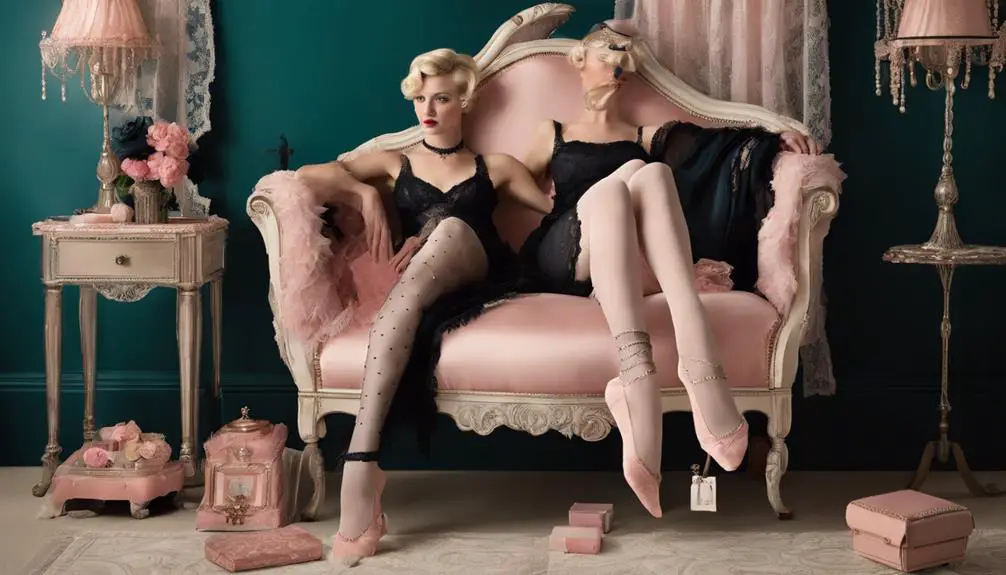
In the vibrant fashion landscape of the 1920s, color trends in women's silk stockings played a crucial role in defining personal style and enhancing the flapper aesthetic. Early in the decade, women favored skin-colored stockings, which emphasized a natural appearance that complemented their bold, carefree looks. As the decade progressed, stocking colors evolved, embracing bolder shades like ivory, light pink, and vibrant hues, which marked a departure from the more subdued tones of the past.
The table below highlights some popular stocking colors and their significance:
| Stocking Color | Description | Popularity Trend |
|---|---|---|
| Skin-colored | Mimics natural skin tones | Early 1920s |
| Ivory & Light Pink | Soft, romantic alternatives | Mid to late 1920s |
| Medium Gray & French Tan | Matched shoes for elongated legs | Late 1920s |
Sheer stockings became a staple in Vintage Fashion, reflecting the era's embrace of simplicity and elegance. As suntans grew popular, pale shades gained traction, leading to a more streamlined approach to hosiery. Ultimately, these color trends not only showcased individual style but also highlighted the evolving perception of women's silk stockings throughout the decade.
Cultural Significance of Stockings
Stockings emerged as more than just practical garments in the 1920s; they became essential symbols of liberation and self-expression for women. As hemlines rose, silk stockings evolved into significant fashion accessories, accentuating women's legs and showcasing their newfound freedom. This cultural shift towards daring fashion was mirrored in advertisements that encouraged women to explore vibrant colors and styles, reinforcing personal aesthetics.
The cultural significance of stockings during this decade is profound. They weren't merely a functional necessity; they reflected broader societal changes in women's fashion choices and roles. Fashion stockings became integral to both casual and formal attire, allowing women to express their individuality and social status through decorative designs. However, it's important to recognize the racial disparities present in this arena. Women of color often struggled to find matching shades, exposing limitations in fashion accessibility.
As you embrace the styles of the 1920s, consider how silk stockings captured the essence of an era marked by rebellion and transformation. They symbolize a shift towards bold self-expression, highlighting the complex interplay between fashion, identity, and societal evolution.
Practical Tips for Vintage Dressing
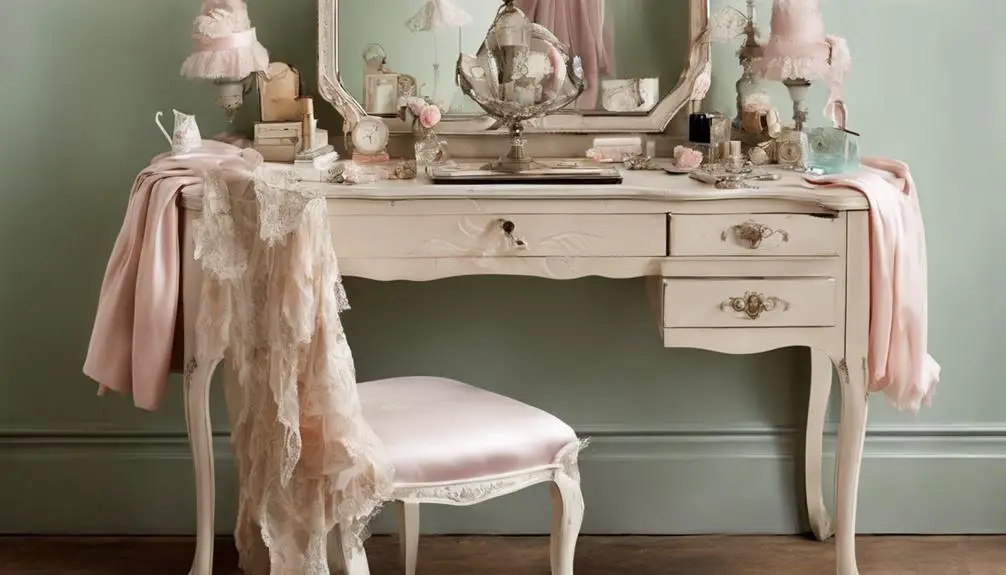
Authenticity is key when embracing the vintage aesthetics of the 1920s, and achieving this look requires attention to detail. Start with your vintage stockings; opt for nude or tan shades that are one tone darker than your natural skin tone. This choice guarantees a seamless integration with your outfit, reminiscent of the flapper era's elegance. Additionally, consider incorporating vintage clothing labels to enhance the authenticity of your ensemble. Fit is essential, so consider selecting one to two sizes up from your modern size, as vintage hosiery stockings often run smaller than contemporary options. To maintain authenticity, steer clear of fishnets unless you're channeling a theatrical performer; traditional stockings secured with a garter belt are the way to go.
Accessorizing can elevate your vintage look notably. Incorporate period-appropriate items like vintage garter belts or decorative clips, which not only enhance authenticity but also add a charming flair.
Lastly, immerse yourself in fashion history and engage with online communities dedicated to vintage styles. These resources can provide invaluable tips and inspiration, helping you master the art of dressing in 1920s vintage style effortlessly. Embrace these practical tips, and you'll step out with confidence in your authentically vintage ensemble.
Care and Maintenance of Stockings
Caring for your vintage silk stockings is as important as selecting the right pair to complete your 1920s ensemble. The delicate nature of silk requires you to handle them with care to avoid snags and runs. Proper storage is essential; keep them in a cool, dark place, preferably rolled or laid flat to prevent creasing.
Here's a quick reference table for maintenance and repair:
| Task | Description | Frequency |
|---|---|---|
| Washing | Hand wash in cool water with mild soap | After each wear |
| Drying | Air dry away from direct sunlight | After washing |
| Storage | Store flat or rolled in a cool place | Regularly |
| Repairs | Use a darning egg for mending holes | As needed |
| Thread Matching | Employ sewing kits for color matching | Whenever repairing |
Thick silk stockings generally offer more durability than thinner ones, making them preferable for everyday wear. If you find holes, don't fret; with a little time and the right tools, you can perform effective repairs. Remember, gentle care is vital not just for longevity but also for maintaining their stunning vintage appeal.
Wearing Stockings Today
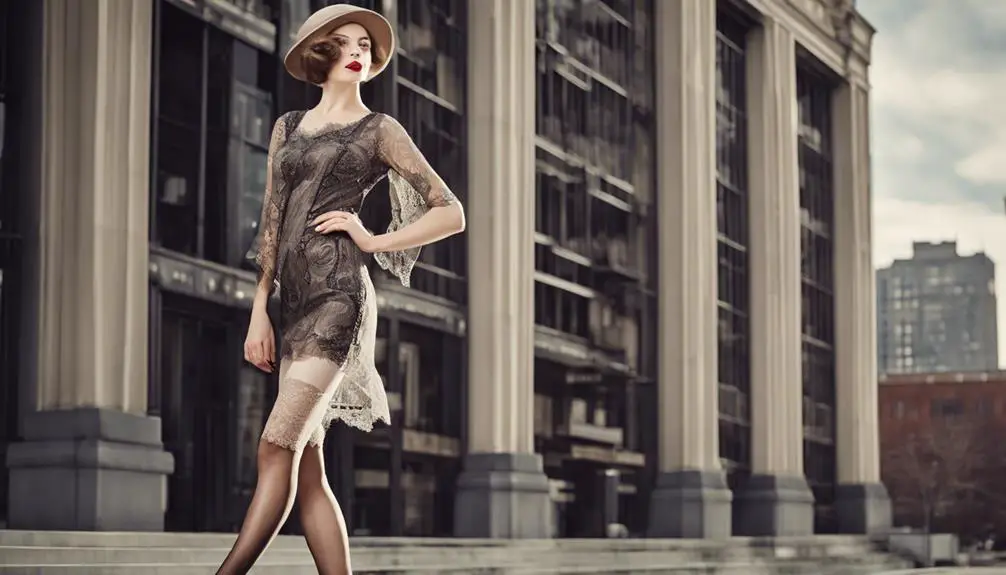
Finding the right stockings can elevate your outfit, effortlessly infusing a touch of 1920s charm into your modern wardrobe. To achieve an authentic look, opt for sheer tights or nylons in pastel or skin tones with a matte finish, steering clear of shiny synthetics. Traditional stockings, especially those held up with garters, create a classic appearance that modern pantyhose simply can't replicate. Understanding the historical context and types of labels can also enrich your appreciation for vintage-inspired styles. Consider investing in vintage-inspired styles like clocked or embroidered stockings, which add a unique flair while reflecting the decorative trends of the 1920s. When styling, be mindful to match the color of your stockings—whether opting for stockings black or lighter shades—to align with your dress. Darker outfits pair well with deeper colors, while lighter dresses benefit from softer tones.
For a fashionable twist, you might explore thigh high stockings or even fishnet options, reminiscent of the flapper aesthetic. However, use fishnets thoughtfully to avoid overwhelming your look. By selecting the right stockings, you not only honor the past but also create a chic, contemporary silhouette that stands out. Embrace these elements to make your outfit truly unforgettable.
Unique Vintage Finds
The allure of unique vintage finds from the 1920s lies in their ability to transport you back to a time of glamour and style. As you explore the market, you'll encounter NOS Antique 20s-30s Art Deco silk stockings, priced at 2,338.29 SEK, a proof of their rarity and historical significance. These pieces embody the luxurious fabric and craftsmanship of the era.
Flapper stockings are particularly enticing, with vintage Burson thigh-highs available for 394.91 SEK, drawing the attention of 49 enthusiastic collectors. This demand indicates a strong interest in authentic vintage fashion that echoes the flapper spirit.
You'll also find antique beige flapper seamed fishnet stockings priced at 726.95 SEK, showcasing the diverse styles that defined the 1920s. Meanwhile, unworn vintage Lady Lustre silk/rayon stockings, listed at 779.43 SEK, exemplify the high value placed on pristine, authentic pieces.
Additionally, consider the practical accessories, like the antique 1920s flapper Wilsnap lingerie clasps for just 62.35 SEK, which perfectly complement your unique vintage finds. Each piece you uncover helps weave the rich tapestry of 1920s fashion history.
Frequently Asked Questions
What Were Socks Like in the 1920s?
Socks in the 1920s evolved with patterned sport designs gaining popularity. You'd notice ankle socks, known as Footees, and stylish knit gaiters emerging, reflecting a blend of functionality and fashion for women's leisure activities.
What Is the Origin of Silk Stockings?
Silk stockings trace back to 16th century Italy, initially designed for nobility. As their appeal expanded, they became synonymous with luxury, eventually evolving into a staple in women's legwear by the early 20th century.
When Did Women's Stockings Stop Having Seams?
Women's stockings began losing seams in the late 1930s, as seamless nylon emerged. The shift reflected changing fashion preferences, emphasizing simplicity and comfort, ultimately making seamless options the standard by the early 1940s.
What Do Silk Stockings Feel Like?
Silk stockings feel incredibly smooth and luxurious against your skin. Their lightweight, breathable nature provides comfort, while the cool sensation makes them perfect for warmer days, enhancing your outfit with a stunning sheen that accentuates your legs.
